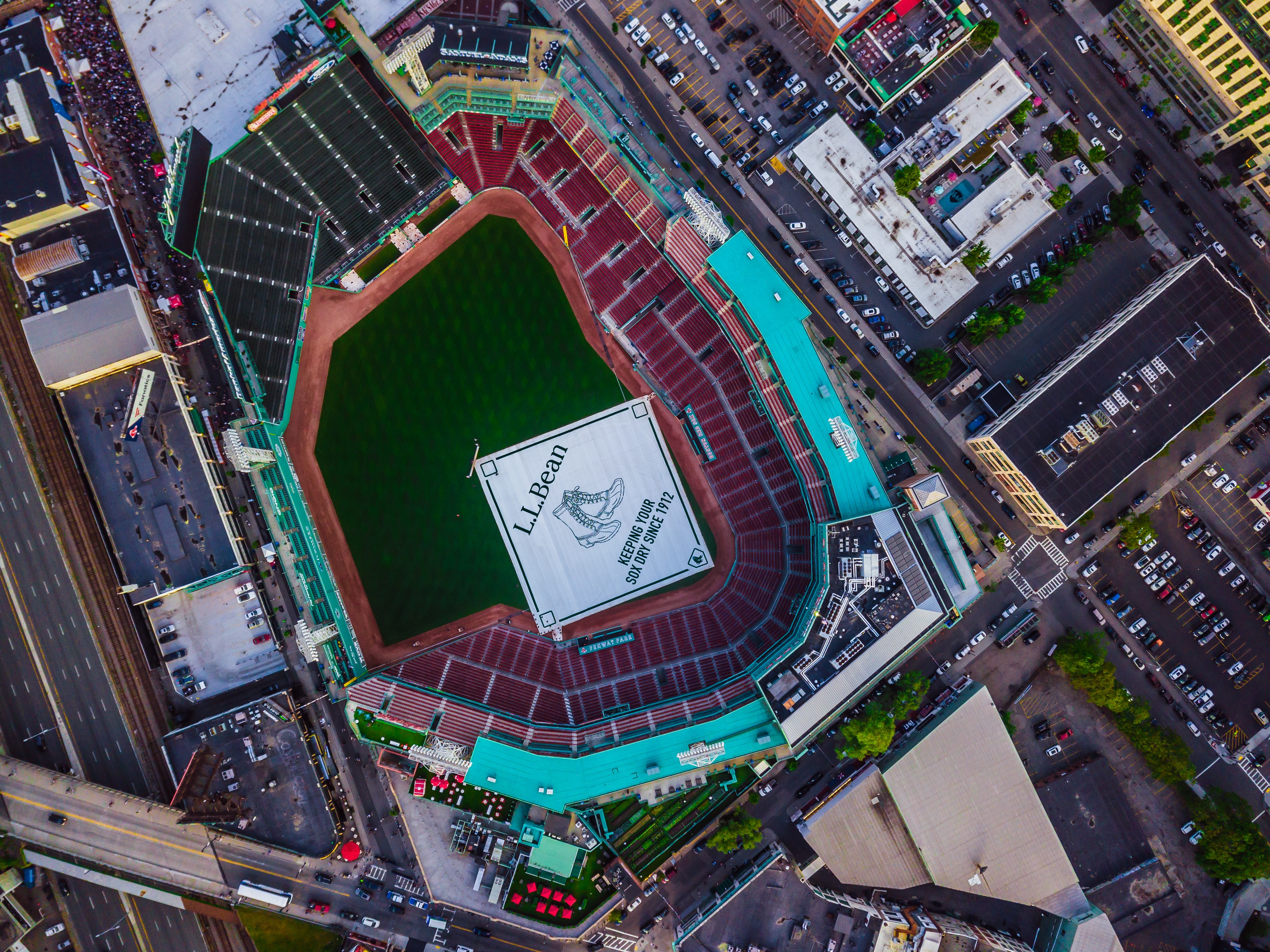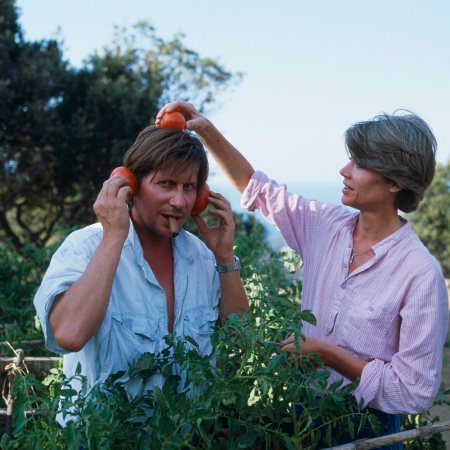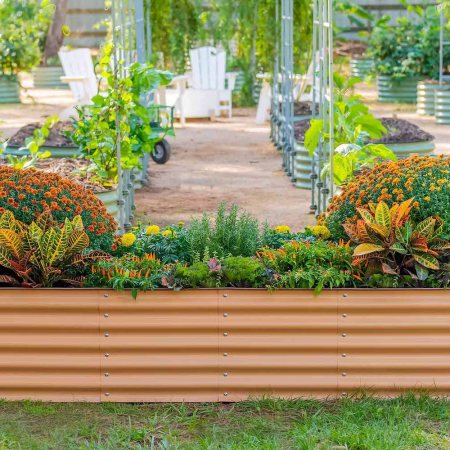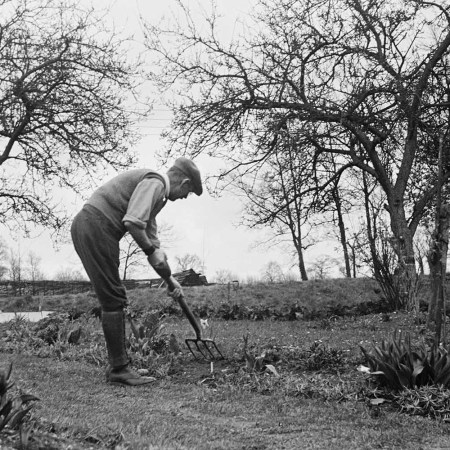When David Mellor — who took an incredible and inspiring path to make it to his version of the big leagues — was first hired in 2001 as the head groundskeeper at Fenway Park, he sat down with his predecessor Joe Mooney for a chat.
In addition to warning Mellor that the Green Monster reflects enough heat onto left field that the grass out there sometimes bakes at 40 degrees warmer than the area behind home plate, Mooney cautioned the new hire that heavy rain could sometimes cause the dugouts to flood and, in some cases, even push water up through the manhole covers and soak the third-base concourse.
Mooney, who’d been working at the park for three decades, then added another wrinkle, Mellor tells InsideHook.
“He said, ‘If it really, really, really rains hard, water will back up from the city drain pipes and fill the first-base camera pit all the way to the top with water. And fish from the Charles River will swim through the city drain pipes and swim out on the field,’” Mellor says.
Mellor thought Mooney was pulling his leg. “Out of respect, I just said, ‘Wow, Mr. Mooney, that’s incredible.’ And then I went home and told my wife you won’t believe the stories that Mr. Mooney tells,” Mellor says.
“The best time to water your grass is between 2 a.m. and 6 a.m., so your grass doesn’t sit wet all night.”
Fenway Park groundskeeper David Mellor
The weekend before his first Opening Day, Boston was set to get heavy rain, so Mellor and the grounds crew put the tarp on the field on Friday night to protect the field. The rain stopped the following morning around sunrise after three inches or so had fallen.
“Saturday morning, I walked out behind home plate to check the tarp, walked over by the first base dugout and sure enough, there was a fish on the edge of the grass,” Mellor says. “I thought I was being punked. I looked up in the upper deck, called Mr. Mooney’s name, thought he was hiding somewhere, I didn’t find him anywhere. So I walked to the camera pit and sure enough, it was filled to the top with water. And between the camera pit and the second base position, there were seven more fish.”
In 2004, Mellor led a renovation that outfitted Fenway with better irrigation, and the fish haven’t washed up since.
In addition to finding a drainage system that doesn’t allow for fish to wind up as fertilizer, here are five more tips about proper lawncare from Mellor, the author of One Base at a Time: How I Survived PTSD and Found My Field of Dreams.

1. Only take a little bit off the top
“People cut their grass too short. [At Fenway] we mow the grass at a height of cut for playability, but homeowners, and certainly in the northeast, should be mowing between 2.5, 3.5 inches height of cut. We mow usually around an inch high. But having a taller leaf blade at your home is going to shade the roots and not dry out as quick. You never want to cut off more than one-third of the grass plate at a time, so that you aren’t stressing and you’re not out there baling hay with your lawn.”
2. All watering times were not created equal
“The best time to water your grass is between 2 a.m. and 6 a.m., so your grass doesn’t sit wet all night. You can pick up a timer at your local hardware store for your house or your irrigation system. And never think a little bit’s good so a lot must be better with water.”
3. Don’t be afraid to get tested
“I encourage people to get a soil test done. They can do that through their country extension agent. It will tell you percent of sand, silt and clay, so you get to know about drainage in your yard. But also nutrient analysis, so it’ll tell you what you’ll need for fertilizer. If you have troubled areas in your yard, you can test those separately.”
4. With great fertilizer comes great responsibility
“With fertilizer, even if you’re using organic fertilizer, always follow the label. Like I said, just never think ‘a little bit’s good, a lot must be better.’ Whatever the label says, the label’s the law. Use any chemical wisely. Don’t spread it on your sidewalk or your driveway. Clean up after yourself.”
5. Ultimately, beauty is in the eye of the beholder
“I remember when I was in college, I thought when I get my first lawn, it’d be like a pool table, not a grass blade out of place and not a weed in sight. And then I had two daughters who taught me, through their eyes, how beautiful a dandelion flower was when they would pick bouquets for my wife and I. And they would blow the seed heads all over the yard and we would look for clover. And so I realized if they were happy, I was happy. So I didn’t fret about dandelions or clover anymore. I don’t worry about weeds in my house. A weed is classified as ‘an undesirable plant that’s out of place.’ So a beautiful rose bush on Fenway’s field could be classified as a weed, I guess.”
The Charge will help you move better, think clearer and stay in the game longer. Subscribe to our wellness newsletter today.



















